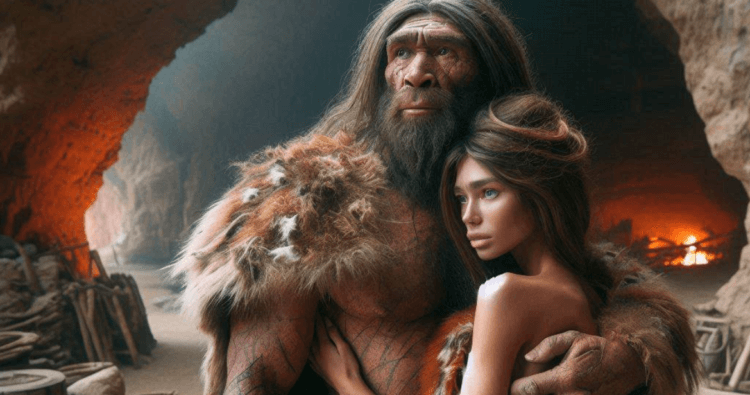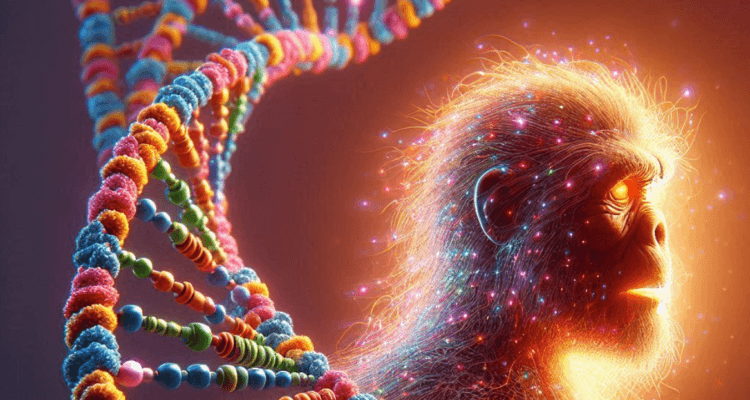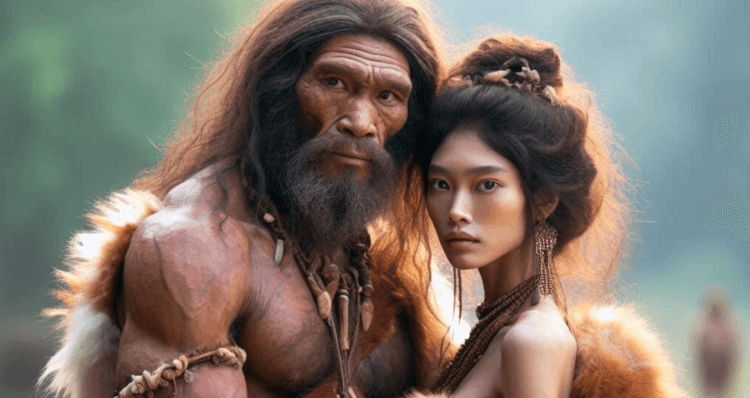The last Neanderthals on Earth died about 40 thousand years ago, but their genes are alive to this day, since they are present in the DNA of most modern people. When our ancestors came out of Africa, they met these hominids and, obviously, began to develop close relationships with them. True, there is still debate among scientists about why our ancestors had sexual intercourse with them — as a result of violence by Neanderthals or created families with them by mutual consent. In addition, it is not known when the exchange of genetic material first occurred. But answering the last question turned out to be not so difficult, as scientists demonstrated in their recent study.

Modern people mixed with Neanderthals
Currently, there is no longer any doubt that modern people mixed with Neanderthals, both in terms of culture , and blood. Therefore, you and I got from 1 to 4% of their genome. Presumably, large noses in some people are precisely the legacy of extinct hominids, as well as poor sleep and obesity.
But it is important to understand that the Neanderthal genes in modern humans are not actually the same as those of the extinct species. Over tens of thousands of years, they have evolved in the human genome. Therefore, if you know the rate at which these genes evolve, and also how much they have changed, you can calculate how many years ago these genes first entered human DNA.
This is exactly what scientists did – they analyzed the genome of almost 60 ancient representatives of Homo sapiens aged from 45,000 to 2,200 years, more than half of whom lived no later than 10,000 years ago. The genes of the ancient people were then compared with the genomes of 275 modern people living in different parts of the world.

The mixing of humans with Neanderthals occurred more than 47 thousand years ago. Image source: www.iflscience.com
This allowed researchers to use software to track the evolution of Neanderthal genes and calculate the rate at which they changed, that is, they found out how many generations it took for certain changes to occur. As it turned out, the genes of Neanderthals came 321-950 generations before the birth of people who lived 40-20 thousand years ago.
Considering how long it takes to change one generation, scientists have found that the exchange of genetic material took place on average 47,124 years ago. But interspecies relationships took a long time – over 6832 years. The authors of the work report this in their study published on the bioRxiv website.

Over time, the human genome «purified» from many extra genes
People got rid of many Neanderthal genes
Scientists suggest that our ancient ancestors had many more Neanderthal genes than you and I. The fact is that genes of another type in the DNA of modern humans are not found in all areas. Some regions of the genome are completely devoid of Neanderthal sequences, which is why they are called “archaic deserts.” But at the same time, there are areas that contain a lot of Neanderthal variants.
From this we can conclude that most of the genetic material obtained from extinct people was harmful and disappeared over time. However, some of the genes obtained could give people a survival advantage and were passed on from generation to generation. For example, it is known that Denisovans, whose genes were found in Papuans, protected the latter from diseases.

Probably, the genes of another species helped people adapt to new conditions when they left Africa. By examining the human genome, scientists discovered 347 Neanderthal genes that had barely evolved for many thousands of years. Basically, all these genes are associated with skin pigmentation, immunity and metabolism.
Don't forget to subscribe to our Zen and Telegram channels so you don't miss the most interesting and incredible scientific discoveries!
This means that interspecies relationships have benefited modern people, which cannot be said about Neanderthals. Let us recall that according to one of the studies, interspecies relations destroyed these fossil people. True, this is only one version of why the Neanderthals could have disappeared, but there are also other versions. For example, it is quite possible that they simply could not stand the competition with modern people, who were superior to them in intelligence, although inferior in terms of physical strength.